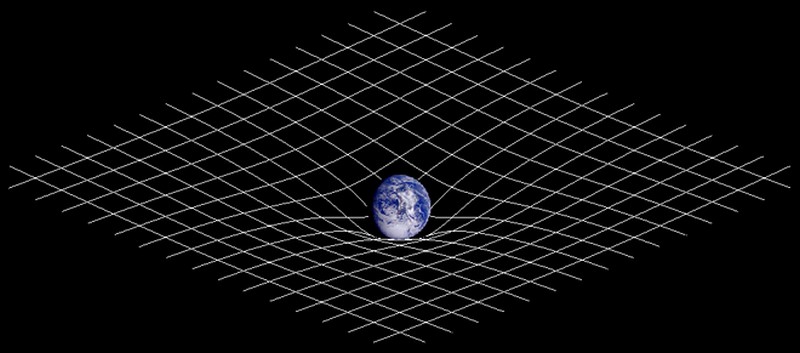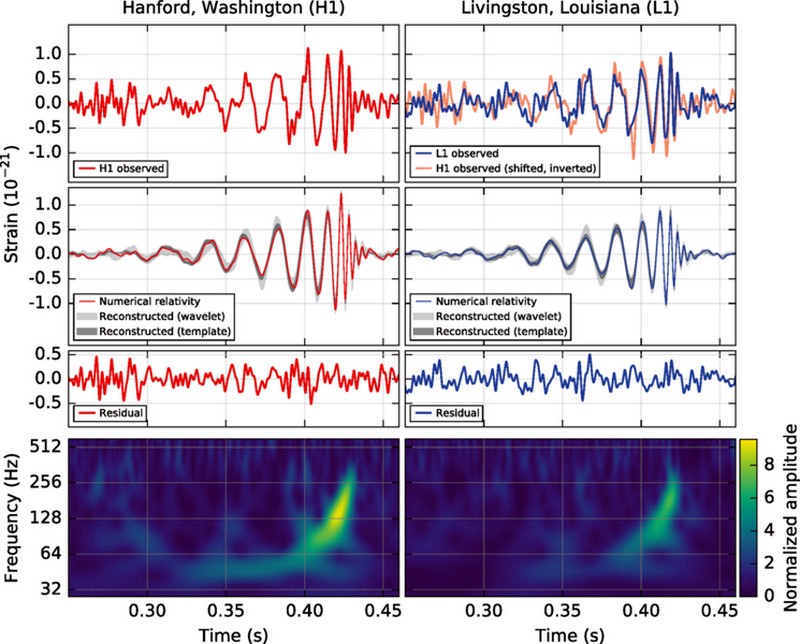Gravitational Waves Detected for the First Time. Know Why This Discovery Matters
In a possibly era-defining discovery, the gravitational waves described by Albert Einstein in 1916 are said to have finally been detected. Scientists from the California Institute of Technology (Caltech), the Massachusetts Institute of Technology (MIT), and the LIGO Scientific Collaboration have “confirmed” the presence of gravitational waves. Interestingly, this discovery comes after around a century since Albert Einstein theorized their existence.
We have written about the possible detection of gravitational waves before and how this was eventually found to be a false alarm. This time, scientists believe they have hard evidence to claim that gravitational waves really exist.
The Landmark Discovery
The gravitational waves are attributed to the merger of two black holes located 1.3 billion light years away from earth. This means that the gravitational waves are from an event in space that happened 1.3 billion years ago but were only detected on earth last year, on September 14 to be specific. As in most other scientific developments, the news about it has only been released recently because the scientists still had to conduct investigations and verification.
For the uninitiated, gravitational waves are ripples in spacetime which get propagated as waves traveling at the speed of light. Being a wave, it infers that there is movement in space itself or the medium through which it travels. As Einstein theorized, virtually any matter can produce gravitational waves. However, it takes a something of astral size to produce the kind of gravitational wave that is detectable by currently available human technologies.
How the Gravitational Waves Were Detected
The scientist required sophisticated equipment to detect these elusive intergalactic waves. They used two enormous detectors located in Washington State and Louisiana. The instruments are collectively referred to as the Advanced Laser Interferometer Gravitational Wave Observatory (Advanced LIGO), an upgraded version of the LIGO already in operation since 2002. It has been upgraded to become a thousand times better in terms of noise cancelling.
No, the detection of gravitational waves was not done by direct visual observation. Instead, the scientists, through the Advanced LIGO, used lasers and mirrors. To simplify the explanation on how the detection setup works, the idea is that a single beam of laser is split into two directions. The other half is made to bounce off one mirror in Louisiana while the other bounces off another mirror in Washington state. The time it takes for the split laser beams to return is then precisely measured. If they don’t return at the same time, the scientists believe that it is because the beam had to travel through more space, something that is believed to be caused by gravitational waves.
The laser beam, by the way, is made to travel through a special L-shaped device buried underground. It’s a very long device connecting Washington and Louisiana. It is designed to allow the laser to travel on a vacuum to prevent interferences. Moreover, this device is equipped with an advanced noise-cancelling system. Gravitational waves are very faint that even the faintest of noises on earth can already drown it.
Binary Black Hole Discovery
In addition to the detection of the manifestation of gravitational waves, scientists have also confirmed that black holes exist in binary pairs. They were even able to record the sound of two black holes merging. LIGO physicist Gabriela Gonzalez, in an interview with Discovery News, said after the successful announcement of gravitational wave detection that “we can now hear the universe.” A video clip of this sound of two black holes merging is available on YouTube.
Implications of the Breakthrough Discovery
So what do all of these developments mean? So what if scientists have already found a proof to support the theory of relativity?
For now, it certainly is still very farfetched to talk about time travel (the kind the media shows) in relation to the possibilities associated with Einstein’s theories of relativity. What is clear, however, is that we have opened a new era for space astronomy. Gabriela Gonzalez says that excitingly said that the field of gravitational astronomy has just become a reality. Luis Lehner of the Perimeter Institute for Theoretical Physics, Ontario shares the same excitement, in an interview with Discovery News, as he emphasized that we now have the technology to chase gravitational waves. The development of the technology to detect gravitational waves means that we can now learn more about gravitational waves and use them to learn more about space and physics in general.
Gravitational waves open up a new way to study objects in space. As opposed to electromagnetic waves, gravitational waves are not affected by barriers. They flow through anything and everything. They can travel through space with or without a medium, because space itself is their medium. As such, they provide an entirely different way to study things in space, especially massive objects and things like black holes, which don’t emit light and radio waves that can be used to study them from a distance.

![[public domain]](https://techtheday.com/wp-content/uploads/2016/02/LIGO.jpg)
